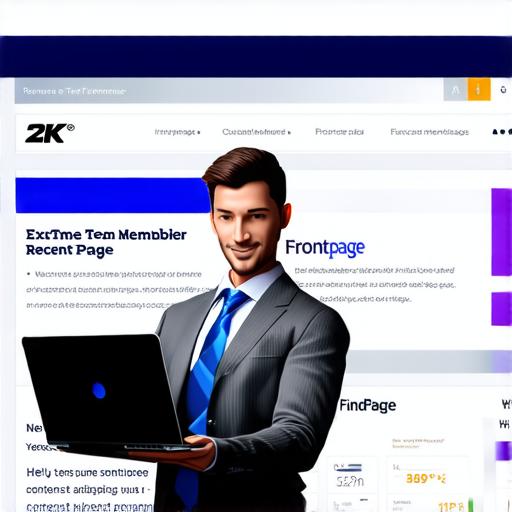When it comes to using a website, navigating its features can sometimes be overwhelming. Whether you are a new visitor or an experienced user, understanding how to use different sections of the site can greatly improve your experience and help you find what you need more efficiently. In this article, we will explore some of the key website features that every dedicated team member should know about, including the frontpage, recent changes,
FindPage
, help contents, and dedicated team support.
Frontpage
The frontpage is typically the first page visitors see when they land on a website. It is important for this page to be clear, easy to use, and visually appealing. Some common elements of a frontpage include a header with navigation links, a main section with featured content, and a footer with additional information.
To optimize your website’s frontpage, consider using high-quality images or videos that are relevant to your content. This can help grab visitors’ attention and keep them engaged on the page. Additionally, make sure to organize your content in a clear and concise way, with headings and subheadings that guide readers through the information. You can also use call-to-action buttons or links to encourage visitors to take action, such as signing up for a newsletter or making a purchase.
Recent Changes

The recent changes section is an important feature for websites that are updated regularly. This section typically displays the latest updates or additions to the site, giving visitors a quick and easy way to see what’s new.
To make the most of your website’s recent changes section, consider using descriptive headings and bullet points to highlight key updates. You can also include links to relevant pages or content within each update to help visitors learn more about the topic. Consider organizing your recent changes in chronological order or by relevance to make it easy for visitors to find the most important information.
FindPage
The
FindPage
feature is a search tool that allows visitors to quickly find specific content on your website. This is especially useful for larger sites with a lot of content, as it can save visitors time and frustration trying to navigate through menus or scroll through pages to find what they need.
To optimize your website’s
FindPage
feature, make sure to include descriptive keywords in your content that will help visitors find what they are looking for. You can also use meta tags and other SEO techniques to improve the visibility of your site in search engines. Additionally, consider using filters or sorting options to help users narrow down their search results based on their specific needs. Consider including a search bar on the top of the page for easy access.
Help Contents
The help contents section is a resource center that provides information and support for visitors who need assistance using your website. This could include FAQs, tutorials, or contact information for customer support.
To make the most of your website’s help contents section, consider organizing your content in a clear and concise way, with headings and subheadings that guide readers through the information. You can also use visual aids such as images or videos to help illustrate key concepts. Additionally, consider including links to relevant pages or resources within each topic to provide additional information and support. Consider including a chatbot for instant support, which can save time for both visitors and support staff.
Dedicated Team Support
Finally, having dedicated team support is essential for ensuring that visitors have a positive experience on your website. Whether you offer 24/7 customer support or provide resources for users to troubleshoot issues on their own, having a dedicated team in place can help address any concerns or problems that may arise.
To optimize your website’s dedicated team support, consider offering multiple channels of communication for users to reach out for assistance. This could include email, live chat, phone, or social media. You can also provide resources such as user guides or tutorials to help visitors troubleshoot issues on their own. Additionally, consider providing clear and concise instructions for contacting customer support, including response times and expected wait times. Consider implementing a ticketing system to track issues and ensure timely resolution.
In conclusion, navigating website features is an important aspect of using a site effectively. By understanding the frontpage, recent changes,
FindPage
, help contents, and dedicated team support, you can greatly improve your experience on any website and ensure that visitors have a positive experience as well. Remember to stay engaged with the content, use descriptive headings and subheadings, provide multiple channels of communication for users to reach out for assistance, and keep your site updated regularly. With these tips in mind, you’ll be well on your way to optimizing your website’s features and improving the overall user experience.
